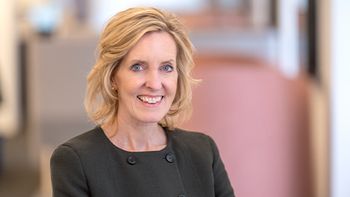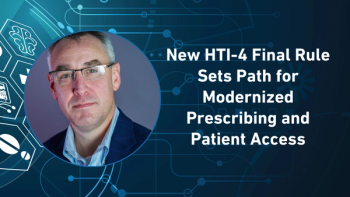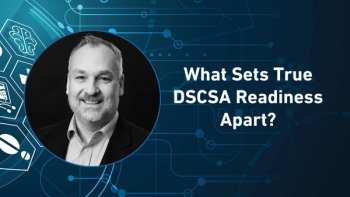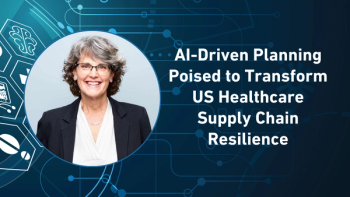
- Pharmaceutical Commerce - September 2021
- Volume 16
- Issue 3
New Blueprint for HCP Relationships
Three keys to achieving digital excellence in the next normal, where a hybrid commercial model will be the standard for physician engagement
The past 18 months and counting, amid a global health emergency, have opened the floodgates to a new mix of digital and in-person interactions across the life sciences. While office visits and live events still provide a critical foundation for relationship building, most healthcare professionals (HCPs), still navigating the Covid-19 pandemic, now say a hybrid blend with personalized, on-demand digital communication is their preferred way to engage with field teams.
This explains why last year’s spike in remote meetings and emails continued into 2021 even as more organizations loosened restrictions.1 (See Figure 1 below). As traditional sales calls reach a new baseline, it’s time to rethink biopharma commercial strategies with a hybrid mindset.
The implications of a company’s hybrid strategy span its field deployment models, educational and promotional content, and engagement channels, as well as the data that provides a backbone for it all. An intentional approach in each of these areas can help go-to-market teams make the right choices about when, how and why to connect with a physician in person, over a virtual meeting, or via email.
To understand how this is playing out in real-world settings, we asked practicing physicians and industry leaders which digital skills and data are key to success in the evolving pharma landscape.
Based on their observations, life sciences is well on its way towards a new standard of personalized, two-way, and data-driven customer experiences.
Augmenting the customer experience
While biopharma leaders point out that the trend toward digital started well before the pandemic, it is gaining steam as doctors realize they can no longer wait for a sales representative’s next visit. Many HCPs are also raising the bar, asking reps to prioritize only the most pressing information their patients need.
“Our HCP customers still say that their biggest source of information is from field-based pharma reps,” said Corinne Yaouanq-Lyngberg, director of omnichannel strategic enablement at Novo Nordisk. “Yet, as digital accelerated during the pandemic, physicians began expecting actionable information at their fingertips. We can better serve HCPs—and, by extension, their patients—when we embrace other ways to build relationships.”
Companies like Novo Nordisk are employing creative solutions to deepen HCP connections in less time. They’re using new channels that allow them to continue educating and engaging customers (from a distance when necessary) while respecting their individual interests and preferences. This means sharing information through virtual calls, mobile apps, electronic health record (EHR) systems and digital content that doctors can pass along to their patients.
The pandemic has made an indisputable case for online engagement, helping field teams warm up to digital channels. Even sales organizations that have heavily invested in building in-person relationships for years now see the value of an omnichannel customer experience. Field reps know it’s crucial to augment engagement in between visits using resources from their digital toolbox.
“The biggest nut to crack isn’t training people to use a new tool,” noted Yaouanq-Lyngberg. “That part is actually easy since our reps have used digital tools for some time now. It’s more about helping them best orchestrate the entire customer experience leveraging this evolving mix.”
Connecting through on-demand digital channels
With telehealth adoption rising to levels 38x higher than before the pandemic,2 HCPs have grown comfortable using technology. In their personal lives as well, doctors are now accustomed to online communications and self-service access to relevant information when and where it’s most convenient. In fact, 70% now consider themselves digital natives.3
John Panozzo, MD, of Primary Health Associates, appreciates how virtual tools help him keep up with important treatment options. “For the last 20 years, we’ve had reps come into the office in person, usually unannounced, and wait in the lobby for an opportunity to talk to us,” he said. “Now, with digital, it’s more efficient because I can request samples online, speak to a scientific liaison in a virtual meeting and go through a new article or study without disrupting my time with patients.”
With fewer interruptions, HCPs are more attentive and engaged during these conversations, which end up becoming more scientific and meaningful. However, Panozzo notes that it’s easier to connect online with a rep he already knows. “The relationships we had in place before Covid were easier to maintain during pandemic restrictions, while interactions with new reps became more difficult,” he said. “We get thousands of emails a day and don’t have time to look at each one.”
Engagement patterns across Veeva’s customer base reflect this. HCPs with established rep relationships open their emails 4x more often, attend 3x more remote meetings and spend 3x longer in those meetings than their peers.4 (See Figure 2 below). Life sciences companies have a prime opportunity to differentiate themselves by taking these relationships to the next level with more intimate, concierge-like experiences for HCPs across channels.
As the hybrid engagement model evolves, HCPs such as Panozzo are looking for interactive, user-friendly digital tools that can help them build new relationships with reps. They want the ability to proactively request information about medications their patients need, rather than waiting for updates whenever pharma companies think it is the right time to intervene.
Relearning HCP preferences with the help of data
To deliver ideal experiences in the face of these new expectations, reps should look at HCPs from a different vantage point. Eric Solis, director and lead data scientist at Takeda, noted, “Before the pandemic, our approach was centered on face-to-face interaction with other tactics sporadically playing supporting roles. While face-to-face interaction and building personal relationships with HCPs is critical, the risk is that this “door-to-door salesman”-centric approach is becoming outdated and won’t cut it post-Covid. We need to leverage data to aid our teams in relearning our customers one-by-one to help figure out the right mix of engagements to meet each HCP’s individual needs.”
While nine in 10 HCPs say they want either all virtual or a combination of virtual and in-person meetings moving forward,5 companies are noticing huge variation across their customer bases in terms of how doctors want to engage in the hybrid environment. This makes it hard for field reps to know the best ways to deliver information to each individual HCP.
“As we move away from homogeneous HCP interactions and preferences, we need to understand our customers several layers deep,” adds Solis. “Beyond simple operational things, like when reps can get into an HCP’s office, it’s important to know what content is most appropriate for each touchpoint.”
Field reps should keep in mind that even when they can get in the door, that doesn’t mean in-person is the most effective way to share information. Instead, they can focus on meeting each physician where they are, with the specific information they need to make a difference in how they treat patients.
Keeping up with these changing dynamics requires robust data across the entire patient journey. Solis’ team, for example, uses real-time insights to advance Takeda’s goal: connecting education about rare disease treatments with the right physicians and patients to accelerate diagnoses.
“Particularly with rare diseases, timely delivery of relevant informative content is absolutely essential to patient care,” he said. “Pinpointing these opportunities is a fundamental part of any interaction between physicians and reps.”
Data and analytics can also recommend next-best actions for each HCP and help commercial teams measure their impact. This involves boiling down a broad spectrum of data sources into insightful, actionable nuggets of information and getting those to the field in ways that help them adapt to new digital tactics. When commercial organizations help field teams do their jobs more efficiently and deliberately, reps can better focus on delivering key content to HCPs and, in turn, their patients.
Preparing for a new business-as-usual
The possibilities of hybrid are far-reaching. Companies that transform commercial models to embrace a flexible blend of face-to-face, virtual, and on-demand meetings can deliver the experience that HCPs truly want and expect. This is critical, since pre-Covid face-to-face engagement levels aren’t returning, even as healthcare organizations begin to allow in-person activity again. Needs and expectations have changed too much in the meantime for a return to business-as-usual.
Brands need to reimagine how they connect with customers, deliver great patient support and services and adopt digital channels as permanent and foundational components of engagement. Companies that do this well will drive higher levels of commercial sales, ultimately helping those who have the most to gain: patients.
About the Author
Dan Rizzo is the global head of commercial business consulting at Veeva.
References
1. Veeva Pulse data, 2019-2021
2. McKinsey & Company, “Telehealth: A quarter-trillion-dollar post-Covid-19 reality?,” July 2021,
3. “Intelligent HCP Engagement in Europe” Veeva Whitepaper, 2021,
4. Veeva Pulse data, U.S. Market, May 2021
5. “Is Covid-19 altering how pharma engages with HCPs?” Accenture, August 2020
Articles in this issue
about 4 years ago
When the extreme hits homeabout 4 years ago
Pharmaceutical Commerce - September 2021 Issue (PDF)about 4 years ago
Pharma Cold Chain: Pushing the Envelopeabout 4 years ago
The Temperament for Transportabout 4 years ago
The Opportunity for Sustainabilityabout 4 years ago
Shipping Strategies in Unusual Timesabout 4 years ago
2021 Cold Chain Service Provider Directoryover 4 years ago
The True Reliability of Real-World Dataover 4 years ago
The Future Heats Up Due to Cold ChainNewsletter
Stay ahead in the life sciences industry with Pharmaceutical Commerce, the latest news, trends, and strategies in drug distribution, commercialization, and market access.





